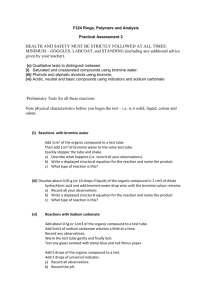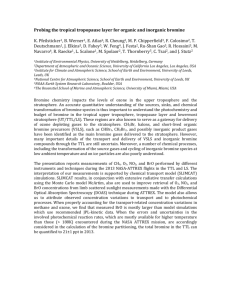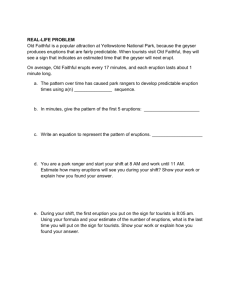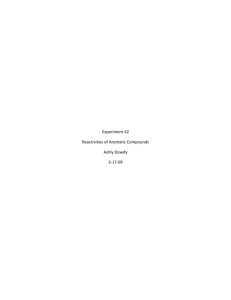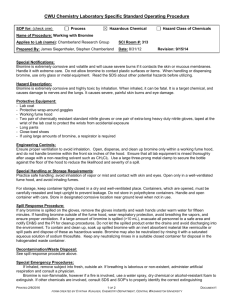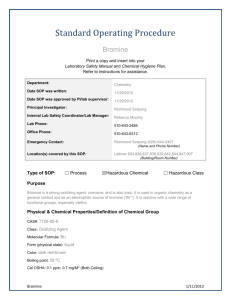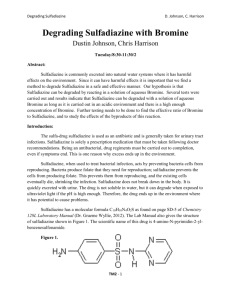Science Current Events (Rock Unit Article) Name
advertisement
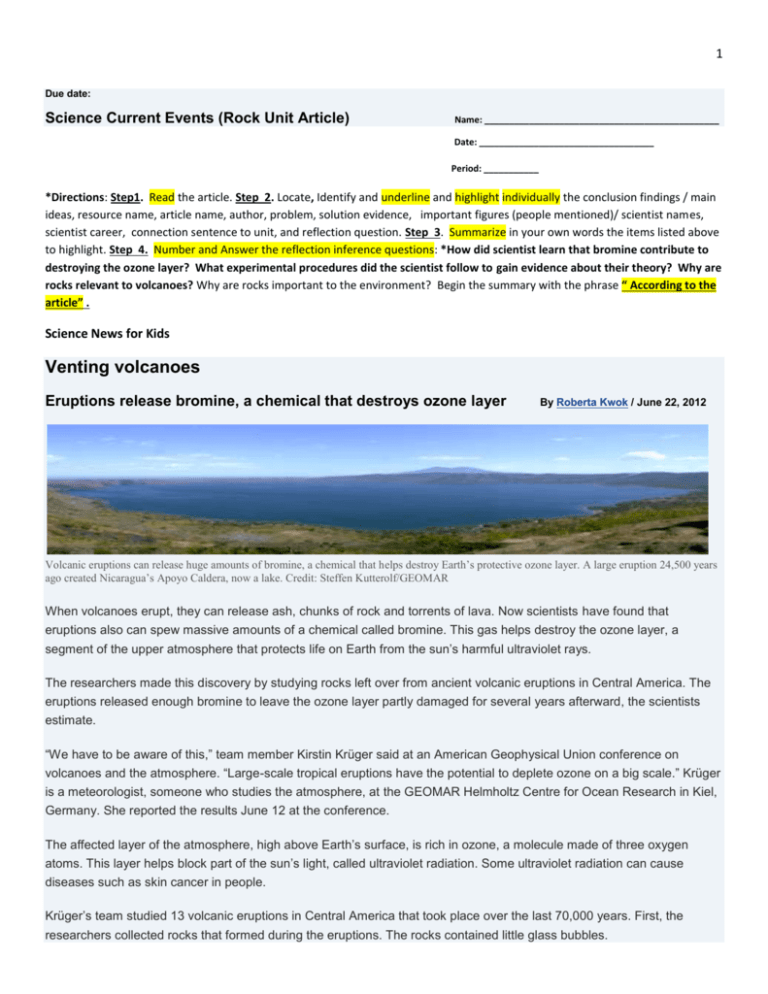
1 Due date: Science Current Events (Rock Unit Article) Name: _______________________________________________ Date: ___________________________________ Period: ___________ *Directions: Step1. Read the article. Step 2. Locate, Identify and underline and highlight individually the conclusion findings / main ideas, resource name, article name, author, problem, solution evidence, important figures (people mentioned)/ scientist names, scientist career, connection sentence to unit, and reflection question. Step 3. Summarize in your own words the items listed above to highlight. Step 4. Number and Answer the reflection inference questions: *How did scientist learn that bromine contribute to destroying the ozone layer? What experimental procedures did the scientist follow to gain evidence about their theory? Why are rocks relevant to volcanoes? Why are rocks important to the environment? Begin the summary with the phrase “ According to the article” . Science News for Kids Venting volcanoes Eruptions release bromine, a chemical that destroys ozone layer By Roberta Kwok / June 22, 2012 Volcanic eruptions can release huge amounts of bromine, a chemical that helps destroy Earth’s protective ozone layer. A large eruption 24,500 years ago created Nicaragua’s Apoyo Caldera, now a lake. Credit: Steffen Kutterolf/GEOMAR When volcanoes erupt, they can release ash, chunks of rock and torrents of lava. Now scientists have found that eruptions also can spew massive amounts of a chemical called bromine. This gas helps destroy the ozone layer, a segment of the upper atmosphere that protects life on Earth from the sun’s harmful ultraviolet rays. The researchers made this discovery by studying rocks left over from ancient volcanic eruptions in Central America. The eruptions released enough bromine to leave the ozone layer partly damaged for several years afterward, the scientists estimate. “We have to be aware of this,” team member Kirstin Krüger said at an American Geophysical Union conference on volcanoes and the atmosphere. “Large-scale tropical eruptions have the potential to deplete ozone on a big scale.” Krüger is a meteorologist, someone who studies the atmosphere, at the GEOMAR Helmholtz Centre for Ocean Research in Kiel, Germany. She reported the results June 12 at the conference. The affected layer of the atmosphere, high above Earth’s surface, is rich in ozone, a molecule made of three oxygen atoms. This layer helps block part of the sun’s light, called ultraviolet radiation. Some ultraviolet radiation can cause diseases such as skin cancer in people. Krüger’s team studied 13 volcanic eruptions in Central America that took place over the last 70,000 years. First, the researchers collected rocks that formed during the eruptions. The rocks contained little glass bubbles. 2 Next, the team measured bromine levels in the glass bubbles. By figuring out the amount of bromine in the rocks, the researchers could estimate how much bromine the volcano belched out. Each eruption released 4,000 to 600,000 tons of bromine, the team concluded. Volcanoes are not the only cause of ozone layer damage. Most bromine in the atmosphere comes from chemicals used by people. For example, methyl bromide is a chemical used to control pests on farms. In addition, chemicals called chlorofluorocarbons, which have been used in refrigerators, also contribute to ozone layer destruction. Many countries have agreed to use less ozone-harming chemicals. The research by Krüger’s team could help scientists estimate the amount of bromine released by today’s volcanic eruptions. “If we can apply this to other volcanoes, we can really get a handle on how much bromine is coming out,” Tamsin Mather, a researcher who studies volcanoes at the University of Oxford in England, told Science News. Reflection Inference questions *How did scientist learn that bromine contribute to destroying the ozone layer? What experimental procedures did the scientist follow to gain evidence about their theory? Why are rocks relevant to volcanoes? Why are rocks important to the environment? How is this science reading resource connected to the current unit? Number the questions. Resource Evidence Summary: ___________________________________________________________________________________________________________ ___________________________________________________________________________________________________________ ___________________________________________________________________________________________________________ ___________________________________________________________________________________________________________ ___________________________________________________________________________________________________________ ___________________________________________________________________________________________________________ ___________________________________________________________________________________________________________ ___________________________________________________________________________________________________________ ___________________________________________________________________________________________________________ ___________________________________________________________________________________________________________ ___________________________________________________________________________________________________________ ___________________________________________________________________________________________________________ ___________________________________________________________________________________________________________ ___________________________________________________________________________________________________________ ___________________________________________________________________________________________________________

